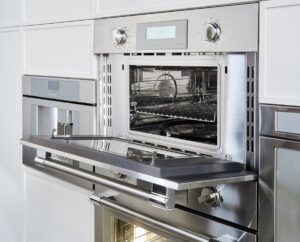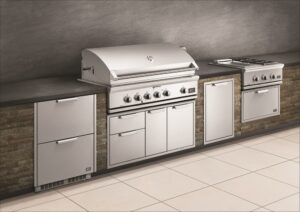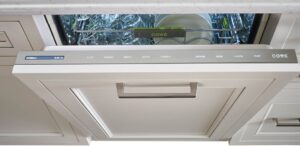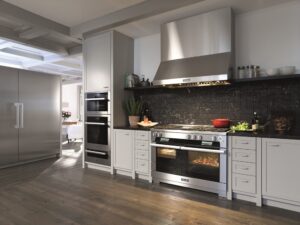Should You Choose a Freestanding or Slide-In Range?
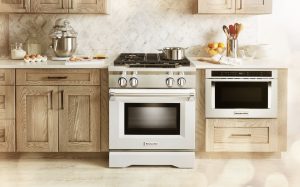
When you’re shopping for a new range, one of the first decisions you’ll need to make is whether you choose a freestanding or slide-in range. Whether you’re remodeling or replacing your existing range to complement your existing kitchen decor, it can be a little confusing to decide which one is best. So, here we’ll walk you through both styles and considerations to help you to make an informed purchasing decision.
The Freestanding Range Basics:
Freestanding ranges are the most common type of range. It provides the option to install the range freestanding on its own, between cabinets, or at the end of the cabinet run against a wall. This flexibility is one of the reasons why freestanding ranges are the more popular choice, but they also tend to be more affordable compared to their slide-in counterparts.
Freestanding ranges also have finished sides, making it possible to install anywhere in the kitchen without a need for cabinetry. They also tend to have a backsplash, which provides protection for the wall from splashing liquids and grease splatters during the cooking process.
This style of range typically has the controls behind the burners, with knobs in front of the burners, a large oven capacity and a warming or storage drawer at the bottom.
The Slide-in Range Basics:
A slide-in range is designed to fit flush with countertops and blend in seamlessly with its surrounding cabinetry. This does mean that installation is required, since the appliance does not have finished sides. The installation will allow the range to slide-in between the cabinetry.
Slide-in ranges typically have the controls near the burners at the front of the range rather than the back. This makes it preferable for many people since you don’t have the reach over potentially hot burners to make temperature adjustments.
As with freestanding models, slide-in ranges typically have a warming or storage drawer at the bottom of the range. But, slide-in ranges do tend to have a wider top, as they overlap the countertop, eliminating the space between the countertop and the range, so you don’t get food spills or drips down the side of the appliance.
This creates a custom, built in aesthetic, but it does come at a cost, as slide-in ranges are typically more expensive than comparable freestanding models.
Which One is Best?
Both slide-in and freestanding ranges are available for electric, gas, dual fuel or induction. They also tend to have similar features, which depends on the specific model. This means that you don’t need to compromise on which fuel and the feature set when choosing your new appliance.
Which one is best will come down to the installation. A slide-in range is not directly installed against a wall, as it typically sits a few inches from the wall, creating a little countertop space which wraps around the back of your cooktop. So, if you want to switch from a slide-in range to a freestanding one, you will need to reconfigure your countertop to be able to accommodate it.
The reverse is also true, as you will need to fill in the gap at the back if you want to swap your freestanding range for a slide-in range. You will also need to renovate the back wall to ensure that it is not vulnerable to stains, water and steam.
If you’re considering a new range and are not sure about whether to choose a freestanding or slide-in range, you can explore your options with our online range collection or obtain further help and guidance from one of our home appliance experts.
- The Ultimate Guide to Outdoor Beer Dispensers: Elevate Your Backyard Entertaining in 2025
- Choosing the Perfect Bathtub: Freestanding vs. Built-In Styles for a Luxury Bathroom
- Do You Really Need a Second Oven? When a Double Oven Makes Sense
- How to Choose the Right Faucet Finish for Your Kitchen or Bathroom
- Designing the Ultimate Outdoor Kitchen: Hestan, Lynx, and DCS Essentials for 2025
- Should You Feature Graff, Dornbracht, or Axor? 2025 Faucet & Sink Trends in Luxury Design
- Dishwasher Buying Guide 2025: Quiet, Clean, and Panel-Ready Options Explained
- Luxury Range Buying Guide 2025: How to Choose the Perfect Pro-Style Range
- How to Match Appliances with Your Kitchen Cabinet Style
- Luxury Kitchen Appliance Packages: Are They Worth It For Beverly Hills Homeowners?



